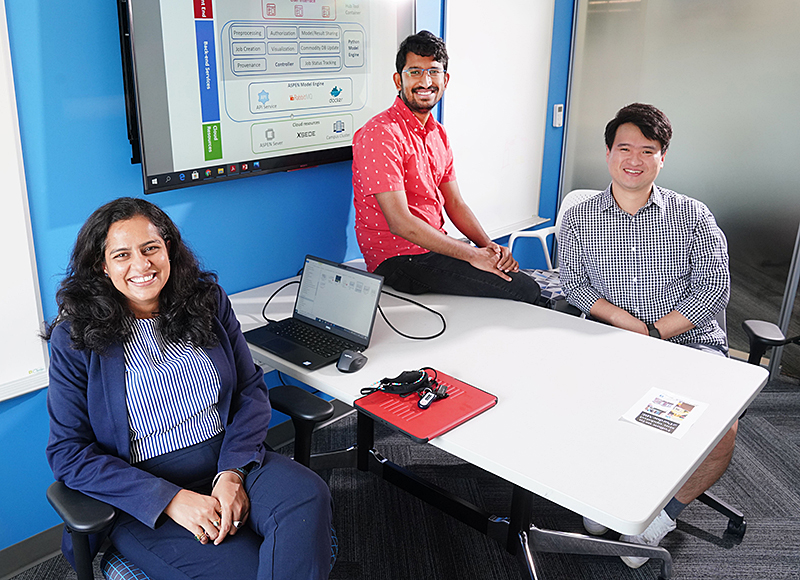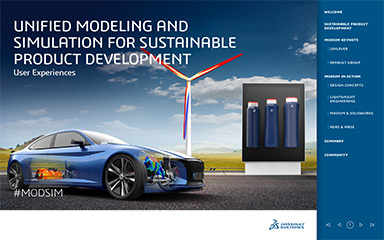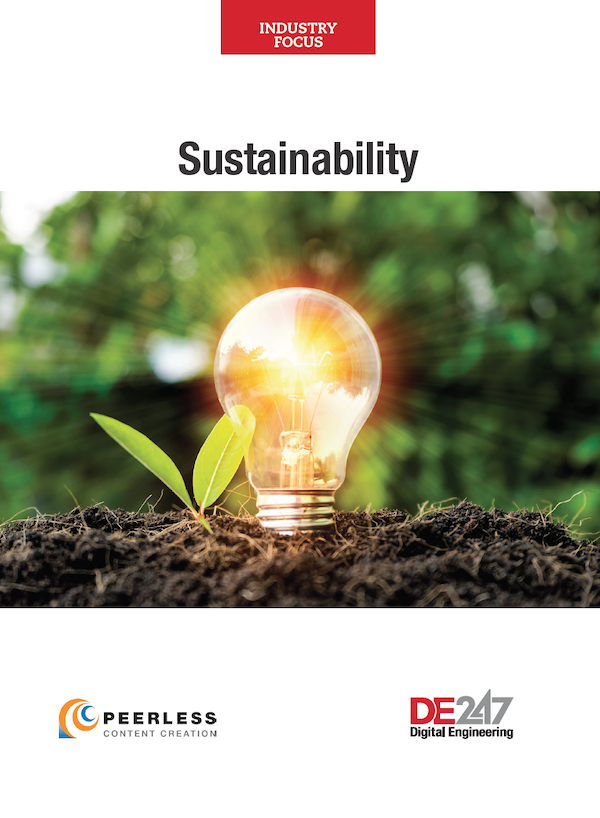Systems Modeling Techniques Take Aim at a More Sustainable Future
Purdue team employs fast, automated modeling to map the physical economy in an effort to test drive steps to sustainability.

Purdue University professor Shweta Singh is one of the faces behind the cloud-based platform modeling tool. Image Courtesy of Purdue University.
Latest News
October 25, 2021
In the spirit of the human genome project, which armed researchers with the tools to understand genetic factors to better prevent and treat human disease, a Purdue University interdisciplinary scientist and her team have come up with a modeling tool that helps industry and policymakers test-drive steps to create a more sustainable economy and supply chain.
Combining physical principles and mechanistic models culled from physics, engineering, and biological sciences, Shweta Singh and her team have automated the mapping of the physical economy, taking a systems-level view to find hidden connections across industrial sectors. By mapping the physical economy for a specific region, Singh is shooting for a big-picture view that will allow policymakers and industry players to plug in potential changes to their supply chain processes and gauge their impact on goals like reducing waste and lowering carbon emissions.
Traditional attempts to model and achieve zero-waste or low-carbon milestones focused on one portion of industrial flow such as reducing energy use in a single production process. Yet that singular concentration is not enough to guide effective investments in emerging technologies and process change to drive enough overall improvement, Singh maintains. According to a published paper describing the modeling effort, transitioning current economic systems towards zero waste and low-carbon systems will require synergistic efforts across different industrial systems in a region along with adoption of new technologies at scale. As a result, regions need to take a macroscopic view of physical flows such as wastes, emissions, and resources across the regional economy and then evaluate the impact of adopting various technology solutions across those same economy-wide physical flows.
“We needed the human genome project—the complete map—to begin to identify the genes key to disease or health, and we need a complete map of the physical economy to identify what changes are key to achieving sustainability,” explains Singh, also an assistant professor of agricultural and biological engineering at Purdue University. “If you have a map of your whole network of manufacturing systems based on technology A vs. technology B, it helps us see existing risks, what waste is being generated, and what options there are to actually improve on efficiency.”
The problem is existing mapping methods take too much time, mostly due to the manual collection of data and mapping it to different industrial sectors. There are also additional challenges related to collecting, reproducing, and validating data on a sub-regional scale. Singh’s integrated mechanistic-macroscopic approach uses computational mechanistic Engineering Models (Ems) to simulate material flows at high regional and sectoral level resolutions and connects the flows to the macroeconomic framework of input-output (IO) models to generate detailed material flow maps of a regional economy, according to a paper chronicling their efforts.
As described in the paper:
“The rationale behind this approach is that physical economy is a manifestation of production processes, consumption of goods and waste generation, with circular economy bringing these back into the production cycle. Hence, the models based on fundamental mass balance and physics-based equations that mechanistically simulate production of various commodities and wastes can provide necessary physical data without only relying on empirical data related to outputs of an economic sector. This mechanistic approach greatly reduces allocation challenges as material flow information can be simulated at an individual sector level of a given region.”
There is a U.S. patent pending on the cloud platform used to implement the methodology for automation, and the group is considering the possibility for commercializing the technology.
For a deeper dive into Professional Singh’s research and the corresponding cloud-based simulation tool, check out this video presentation.
Subscribe to our FREE magazine, FREE email newsletters or both!
Latest News
About the Author
Beth Stackpole is a contributing editor to Digital Engineering. Send e-mail about this article to [email protected].
Follow DE





